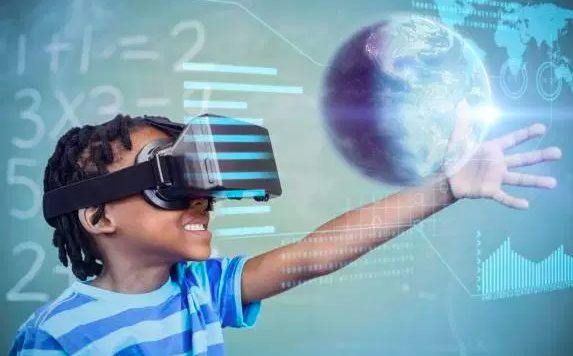Does VR Hold The Key To The Future Of Education?
Twenty years ago, computers in schools were a novelty, not a necessity. By 2014, however, one-third of students in the United States were issued mobile devices by their schools. Some might not agree with children getting access to iPads, but like it or not, technology has already radically reshaped education from preschool all the way up to the graduate level. But of course, there’s still more to come. Could Virtual reality (VR) be the next step?
VR has been used for everything from gaming to PTSD treatment, but we’ve only just begun to scratch the surface in terms of what we can do with the technology. Education is an area that could benefit immensely from VR in several different ways. But how could VR change the future of education? Here’s how it could be used to help people of all ages learn.
Customizing the Classroom Experience
Technology is becoming key in customizing the classroom experience for students. Children with special needs, or those who may be behind in certain subjects can benefit from VR lessons tailored to meet their needs. The more immersive experience helps to engage students, and allows them to take learning at their own pace. Artificial intelligence-powered VR “teachers” can help students feel safe and guide them through their lessons. VR, paired with skilled human teachers, can help ensure that no child feels confused or discouraged.
Engaging Students and Bringing Education to Life
Some of the most exciting learning happens when it doesn’t feel like learning. VR is an excellent tool for bringing education to life and engaging students. Using VR technology, students can learn subjects like biology, history, and geography by immersing themselves in worlds that are thousands of miles (or thousands of years) away. Students often feel more inspired to learn if they have fun with the experience and get a “hands on” look at what they’re studying. It’s very different to read about the Amazon rainforest than it is to “go there” using VR.
VR can also provide an immersive experience for students with virtual fieldtrips. Classes can visit educational museums like the Smithsonian or even take a tour of the solar system!
Helping to Prepare Students for the Future
We don’t perform our best when we don’t know what we’re getting into. The first days on a new job, for example, we’re prone to errors and anxieties, which can have varying levels of consequences. The good news is that VR can help alleviate some of these common issues by immersing students in the environment they’ll be expected to navigate on the job.
Using VR is common practice in the medical field, where nursing educators are in short supply and over 68,000 nursing student applications are rejected due to lack of clinical sites and classroom space. By using VR to provide simulations of experiences that nurses go through while on duty, students can get valuable information in a safe setting that does not require a clinical site. As more trained nurses are desperately needed, this could be one way to get more nurses trained and up to speed.
Improving Adult Literacy
While VR in education has largely been focused on students in elementary, middle, and high schools, it could also play a key role in adult education. With more people choosing to go back to school or improve their literacy (especially adults for whom English is not their first language), VR can help make that education more accessible.
When it comes to literacy, VR could provide an immersive, non-judgmental learning experience for adults who struggle with language. Because the experience helps people to retain what they’ve learned, VR could help adults in literacy learning courses learn more quickly and effectively. With around 36 million adults in need literacy education in the US, VR could make a huge impact on lives across the country.
The Future of VR in the Classroom
Getting students of all ages excited about learning is an important step in getting engagement and retention. Although VR is just beginning to make its way into the classroom, it has the potential to both engage and customize the learning experience. Since there are so many different types of learners, VR could hold the key to ensuring every student gets what they need to perform their best.

